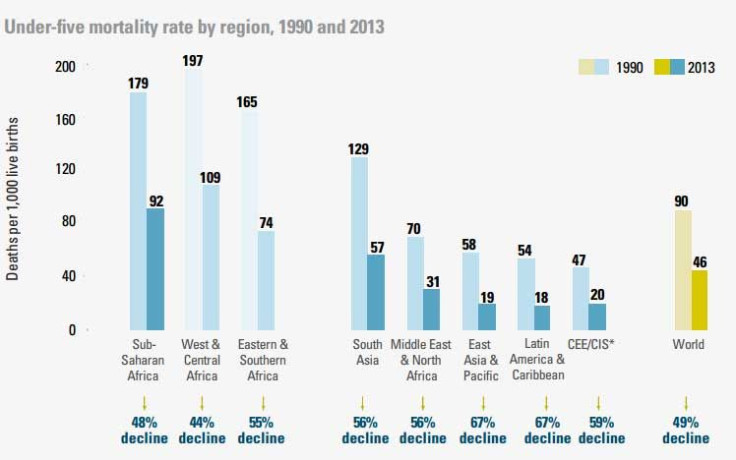1 Million Children Die On First Day Of Life From Preventable Causes; Equity Gap Is Narrowing: UN Report

A new report released by UNICEF finds that one million babies per year don’t live past their first day of birth, with many dying from preventable causes and complications during labor and delivery. The report states that these children could be saved with simple interventions before, during, or after birth.
The same report, titled Committing to Child Survival: A Promise Renewed, however, also found something a little more optimistic: The gap between the number of poor babies and rich babies dying is narrowing over time. Since 1990, there has been a decrease from 12.7 million to 6.3 million deaths in children under the age of 5 — so, in general, things have been improving. But despite the improvements, up to 2.8 million children who are younger than 28 days old still die every year.
“The data clearly demonstrate that an infant’s chances of survival increase dramatically when their mother has sustained access to quality health care during pregnancy and delivery,” Geeta Rao Gupta, UNICEF deputy executive director, said in a statement. “We need to make sure that these services, where they exist, are fully utilized and that every contact between a mother and her health worker really counts. Special efforts must also be made to ensure that the most vulnerable are reached.”

The report found that about half of all women don’t receive the recommended minimum of four antenatal care visits throughout their pregnancy, and also found that labor and delivery complications cause about one-quarter of baby deaths across the world. In 2012, one in three babies were born who did not receive proper medical support.
One of the ways that many deaths could be prevented is simply by breastfeeding; initiating breastfeeding within one hour of birth can lower the risk of neonatal death by 44 percent, UNICEF says.
It probably goes without saying that poorer households are more likely to experience neonatal deaths than richer ones in developed countries, where babies are more likely to be delivered with skilled medical attention. Countries that have some of the highest neonatal death rates include: Ethiopia, Bangladesh, Nigeria, and Kenya. These nations also have a lower coverage of postnatal care for mothers. But in regions outside of sub-Saharan Africa, the amount of under-5 deaths in poor areas is declining faster than the amount of deaths in richer areas. This means that the equity gap is decreasing.
“It is deeply heartening that the equity gap in child survival is continuing to narrow,” Rao Gupta said in the UNICEF statement. “We need to harness this momentum and use it to drive forward programs that focus resources on the poorest and marginalized households; a strategy which has the potential to save the largest number of children’s lives.”



























